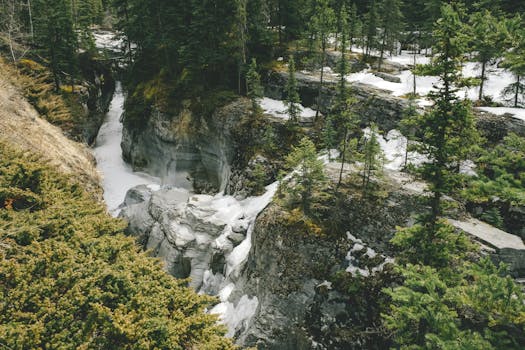The Ultimate Guide to Hiking the Inca Trail to Machu Picchu
The Inca Trail to Machu Picchu, a journey that combines the allure of history with the thrill of adventure, is a must for any avid hiker. This ancient path, once trodden by the Inca civilization, winds through breathtaking landscapes and culminates in the awe-inspiring sight of Machu Picchu. The trek is not for the faint-hearted, but with careful planning and preparation, it can be an unforgettable experience.

This guide aims to provide prospective hikers with all the necessary information to successfully navigate this iconic trail.
Understanding the local culture and history of the Inca Trail is crucial for a rewarding hiking experience. The trail was built by the Incas over 500 years ago as a pilgrimage route to Machu Picchu, their sacred city. Along the way, you'll encounter numerous archaeological sites that offer glimpses into this ancient civilization's remarkable engineering skills and spiritual beliefs. Respect for these sites and for local customs is essential; remember, you are a guest in a land steeped in history and tradition.
Acclimatization is another critical aspect of preparing for the Inca Trail hike. The trail reaches altitudes of over 13,000 feet, which can lead to altitude sickness if your body isn't given time to adjust. It's recommended to spend at least two days in Cusco or another high-altitude city before starting the trek to help your body acclimate.
Selecting the right gear is also vital for a successful hike. Lightweight hiking boots with good ankle support are essential, as is a comfortable backpack with enough space for water, snacks, clothing layers, and other essentials. A rain jacket and waterproof pants are also recommended, as weather conditions on the trail can be unpredictable.
While hiking the Inca Trail is undoubtedly challenging, it's also incredibly rewarding. The stunning views of snow-capped mountains, lush cloud forests, and ancient ruins make every step worth it. And of course, the trail ends with the unforgettable sight of Machu Picchu, often shrouded in mist and seemingly untouched by time.
The Inca Trail is more than just a hike; it's a journey into the past, a physical and mental challenge, and an opportunity to connect with nature and history in a profound way. With careful preparation and respect for the trail and its history, you can embark on this adventure with confidence.
As you prepare for your journey, remember that the Inca Trail is not just about reaching Machu Picchu. It's about embracing the journey itself, understanding the rich history of the Incas, appreciating the stunning natural beauty along the way, and overcoming personal challenges. The Inca Trail offers a unique opportunity to step out of your comfort zone and experience something truly extraordinary.
So lace up your hiking boots, pack your backpack, and get ready for an adventure of a lifetime. The Inca Trail to Machu Picchu awaits you, offering an unforgettable journey through time and space. As you traverse this ancient path, remember to take it slow, respect the environment and local customs, and most importantly, enjoy every moment. After all, it's not every day that you get to walk in the footsteps of an ancient civilization on one of the world's most iconic hikes.
Suggested Travel Itinerary for Hiking the Inca Trail to Machu Picchu
Embarking on the Inca Trail towards the storied peaks of Machu Picchu is not just a trek, but a journey through an ancient world. This itinerary provides a guide to making the most out of this transformative experience.
Day 1 & 2: Arrival and Acclimatization in Cusco
Upon arrival in Cusco, the ancient capital of the Inca Empire, spend your first two days acclimatizing to the elevation which tops roughly 11,152 feet. Explore local markets, delve into the rich tapestry of Cusco's colonial architecture, and maybe try a plate or two of alpaca steak or the traditional cuy.
Day 3: Cusco to Wayllabamba
The first official day of your hike starts at Kilometer 82. Pace yourself as you trek along the Urubamba River with scenic views that stretch towards vast terrains. Camp overnight @ Wayllabamba, nestled in lush greenery.
Day 4: Wayllabamba to Pacaymayo
Prepare for a strenuous climb to Warmiwañusca, known colloquially as "Dead Woman’s Pass", peaking at nearly 13,828 feet. Your efforts are rewarded with panoramic vistas & mesmerizing cloud forests as you descend to Pacaymayo for another night under the stars.
Day 5: Pacaymayo to Wiñay Wayna
Journey through an array of Inca ruins including Runkurakay and Sayacmarca, rich with historical lore. Continue through varied ecosystems before arriving at Wiñay Wayna. The campground here offers splendid views & serves as your final stop before reaching Machu Picchu.
Day 6: Machu Picchu via Sun Gate
An early start leads you to Intipunku (the Sun Gate), where you catch your first breathtaking glimpse of Machu Picchu at sunrise—an emblematic moment. Descend into the site, where you can opt for a guided tour to learn about its storied past & cultural significance.
Day 7: Return to Cusco
After exploring Machu Picchu, return to Aguas Calientes by bus and then board a train back to Cusco. Reflect on the profound journey through heights and history as you prepare to head home or onto your next adventure.
Useful Websites to Visit
peru.travelOfficial tourism site of Peru featuring travel tips, heritage information, and detailed guides on what to expect while in Peru.
machupicchu.gob.pe
Providing reservation details, historical insights &, essential visitor information directly from the management of Historic Sanctuary of Machu Picchu.
lonelyplanet.com
A trusted global travel resource with detailed guides on destinations worldwide, including robust sections on Peru and its hiking trails.